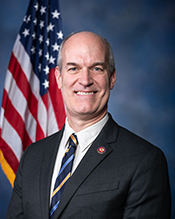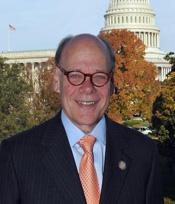0
0
0
Securing Growth and Robust Leadership in American Aviation Act
6/11/2024, 4:07 PM
Summary of Bill HR 3935
Bill 118 hr 3935, also known as the Securing Growth and Robust Leadership in American Aviation Act, is a piece of legislation currently being considered by the US Congress. The main goal of this bill is to promote growth and leadership in the American aviation industry.
The bill includes provisions aimed at improving the safety and efficiency of the aviation system, as well as enhancing the competitiveness of American airlines in the global market. It also seeks to modernize and upgrade the infrastructure of airports and air traffic control systems.
One key aspect of the bill is the establishment of a National Aviation Research and Development Policy, which would prioritize research and development efforts in the aviation sector. This policy would help ensure that the United States remains at the forefront of aviation technology and innovation. Additionally, the bill includes measures to support the training and development of a skilled aviation workforce, as well as initiatives to promote diversity and inclusion within the industry. Overall, the Securing Growth and Robust Leadership in American Aviation Act aims to strengthen the American aviation industry and position it for continued success in the future. It is currently being debated in Congress, with supporters arguing that it will help create jobs, boost economic growth, and ensure the safety and efficiency of the nation's aviation system.
The bill includes provisions aimed at improving the safety and efficiency of the aviation system, as well as enhancing the competitiveness of American airlines in the global market. It also seeks to modernize and upgrade the infrastructure of airports and air traffic control systems.
One key aspect of the bill is the establishment of a National Aviation Research and Development Policy, which would prioritize research and development efforts in the aviation sector. This policy would help ensure that the United States remains at the forefront of aviation technology and innovation. Additionally, the bill includes measures to support the training and development of a skilled aviation workforce, as well as initiatives to promote diversity and inclusion within the industry. Overall, the Securing Growth and Robust Leadership in American Aviation Act aims to strengthen the American aviation industry and position it for continued success in the future. It is currently being debated in Congress, with supporters arguing that it will help create jobs, boost economic growth, and ensure the safety and efficiency of the nation's aviation system.
Congressional Summary of HR 3935
Securing Growth and Robust Leadership in American Aviation Act
This bill reauthorizes the Federal Aviation Administration (FAA) through FY2028, including activities and programs related to airport planning and development, facilities and equipment, and operations. The National Transportation Safety Board is also reauthorized through FY2028.
The bill also addresses a wide range of issues. For example, the bill
- directs the FAA to increase air traffic controller hiring targets;
- establishes a workforce development program to support the education, recruitment, and retention of aviation professionals;
- establishes an FAA Ombudsman to coordinate the response to submissions of inquiries or objections relating to issues such as aircraft certifications and registrations, pilot certificates, and operational approvals, waivers, or exemptions;
- raises the commercial airline pilot retirement age to 67 (currently 65);
- prohibits aircraft dispatchers from working remotely, with limited exceptions for emergencies;
- requires the Department of Transportation (DOT) to establish standards to ensure the aircraft boarding and deplaning process is accessible for individuals with disabilities, including for individuals who use wheelchairs;
- requires DOT to establish a policy directing certain air carriers to seat a young child next to an accompanying adult if adjacent seats are available without charging an additional fee;
- prohibits the FAA from requiring mask wearing or COVID-19 vaccines for passengers, air carrier employees, or FAA employees;
- requires the FAA to issue rules to update the requirements for testing and operating unmanned aircraft (i.e., drones), including for drones operating beyond the visual line of sight; and
- requires the FAA to issue rules for certifying pilots for powered-lift aircraft (i.e., capable of vertical takeoff and landing) and operational rules for powered-lift aircraft.
Current Status of Bill HR 3935
Bill HR 3935 is currently in the status of To President since May 16, 2024. Bill HR 3935 was introduced during Congress 118 and was introduced to the House on June 9, 2023. Bill HR 3935's most recent activity was Became Public Law No: 118-63. as of May 16, 2024
Bipartisan Support of Bill HR 3935
Total Number of Sponsors
1Democrat Sponsors
0Republican Sponsors
1Unaffiliated Sponsors
0Total Number of Cosponsors
6Democrat Cosponsors
4Republican Cosponsors
2Unaffiliated Cosponsors
0Policy Area and Potential Impact of Bill HR 3935
Primary Policy Focus
Transportation and Public WorksPotential Impact Areas
- Accidents
- Accounting and auditing
- Administrative law and regulatory procedures
- Advanced technology and technological innovations
- Advisory bodies
- Atmospheric science and weather
- Aviation and airports
- Broadcasting, cable, digital technologies
- Civil actions and liability
- Computer security and identity theft
- Computers and information technology
- Congressional oversight
- Consumer affairs
- Department of Transportation
- Disability and health-based discrimination
- Disability assistance
- Drug, alcohol, tobacco use
- Employee hiring
- Employment and training programs
- Federal officials
- Government information and archives
- Government studies and investigations
- Infectious and parasitic diseases
- Infrastructure development
- Licensing and registrations
- Noise pollution
- Performance measurement
- Personnel records
- Right of privacy
- Telephone and wireless communication
- Transportation programs funding
- Transportation safety and security
- User charges and fees
- Wages and earnings
Alternate Title(s) of Bill HR 3935
National Transportation Safety Board Amendments Act of 2023
Securing Growth and Robust Leadership in American Aviation Act
National Transportation Safety Board Amendments Act of 2023
Securing Growth and Robust Leadership in American Aviation Act
National Transportation Safety Board Amendments Act of 2023
Securing Growth and Robust Leadership in American Aviation Act
Securing Growth and Robust Leadership in American Aviation Act
To amend title 49, United States Code, to reauthorize and improve the Federal Aviation Administration and other civil aviation programs, and for other purposes.
Comments
Sponsors and Cosponsors of HR 3935
Latest Bills
Providing amounts for the expenses of the Committee on Ethics in the One Hundred Nineteenth Congress.
Bill HRES 131December 12, 2025
Providing for congressional disapproval under chapter 8 of title 5, United States Code, of the rule submitted by the Bureau of Land Management relating to "Central Yukon Record of Decision and Approved Resource Management Plan".
Bill HJRES 106December 12, 2025
Expressing the sense of the House of Representatives in condemning the Government of the People's Republic of China for its harassment and efforts to intimidate American citizens and other individuals on United States soil with the goal of suppressing speech and narratives the People's Republic of China finds unwelcome.
Bill HRES 130December 12, 2025
Providing for congressional disapproval under chapter 8 of title 5, United States Code, of the rule submitted by the Bureau of Land Management relating to "North Dakota Field Office Record of Decision and Approved Resource Management Plan".
Bill HJRES 105December 12, 2025
Providing for congressional disapproval under chapter 8 of title 5, United States Code, of the rule submitted by the Bureau of Land Management relating to "Miles City Field Office Record of Decision and Approved Resource Management Plan Amendment".
Bill HJRES 104December 12, 2025
Providing amounts for the expenses of the Select Committee on the Strategic Competition Between the United States and the Chinese Communist Party in the One Hundred Nineteenth Congress.
Bill HRES 104December 12, 2025
Critical Access for Veterans Care Act
Bill S 1868December 12, 2025
OATH Act of 2025
Bill S 1665December 12, 2025
A bill to extend the authority for modifications to the Second Division Memorial in the District of Columbia.
Bill S 1353December 12, 2025
Saving Our Veterans Lives Act of 2025
Bill S 926December 12, 2025
Saracini Enhanced Aviation Safety Act of 2023
Bill S 911December 15, 2023
Prioritizing Accountability and Accessibility for Aviation Consumers Act of 2023
Bill S 400December 15, 2023
A bill to reinstate pilots fired or forced to resign because of a COVID-19 vaccine mandate.
Bill S 3413December 19, 2023
Alleviating Spaceport Traffic by Rewarding Operators Act of 2023
Bill S 3331January 23, 2024
Air Traffic Controllers Hiring Act of 2023
Bill S 2839January 31, 2024
Border Airport Fairness Act of 2023
Bill S 222December 15, 2023
Drone Infrastructure Inspection Grant Act
Bill S 1817March 12, 2024
Fair and Open Skies Act
Bill S 1752March 12, 2024
Sustain Regional Air Travel Act
Bill S 1659March 12, 2024
MOBILE Act
Bill S 1459March 13, 2024
Global Aircraft Maintenance Safety Improvement Act
Bill S 1256March 13, 2024
A bill to amend title 49, United States Code, to include a public airport in use by an air reserve station as a primary airport.
Bill S 1255December 15, 2023
Providing for consideration of the bill (H.R. 3935) to amend title 49, United States Code, to reauthorize and improve the Federal Aviation Administration and other civil aviation programs, and for other purposes, and providing for consideration of the bill (H.R. 3941) to prohibit the use of the facilities of a public elementary school, a public secondary school, or an institution of higher education to provide shelter for aliens who have not been admitted into the United States, and for other purposes.
Bill HRES 597December 15, 2023
Saracini Enhanced Aviation Safety Act of 2023
Bill HR 911January 16, 2024
Airport Ramp Worker Safety Act
Bill HR 7696April 3, 2024



